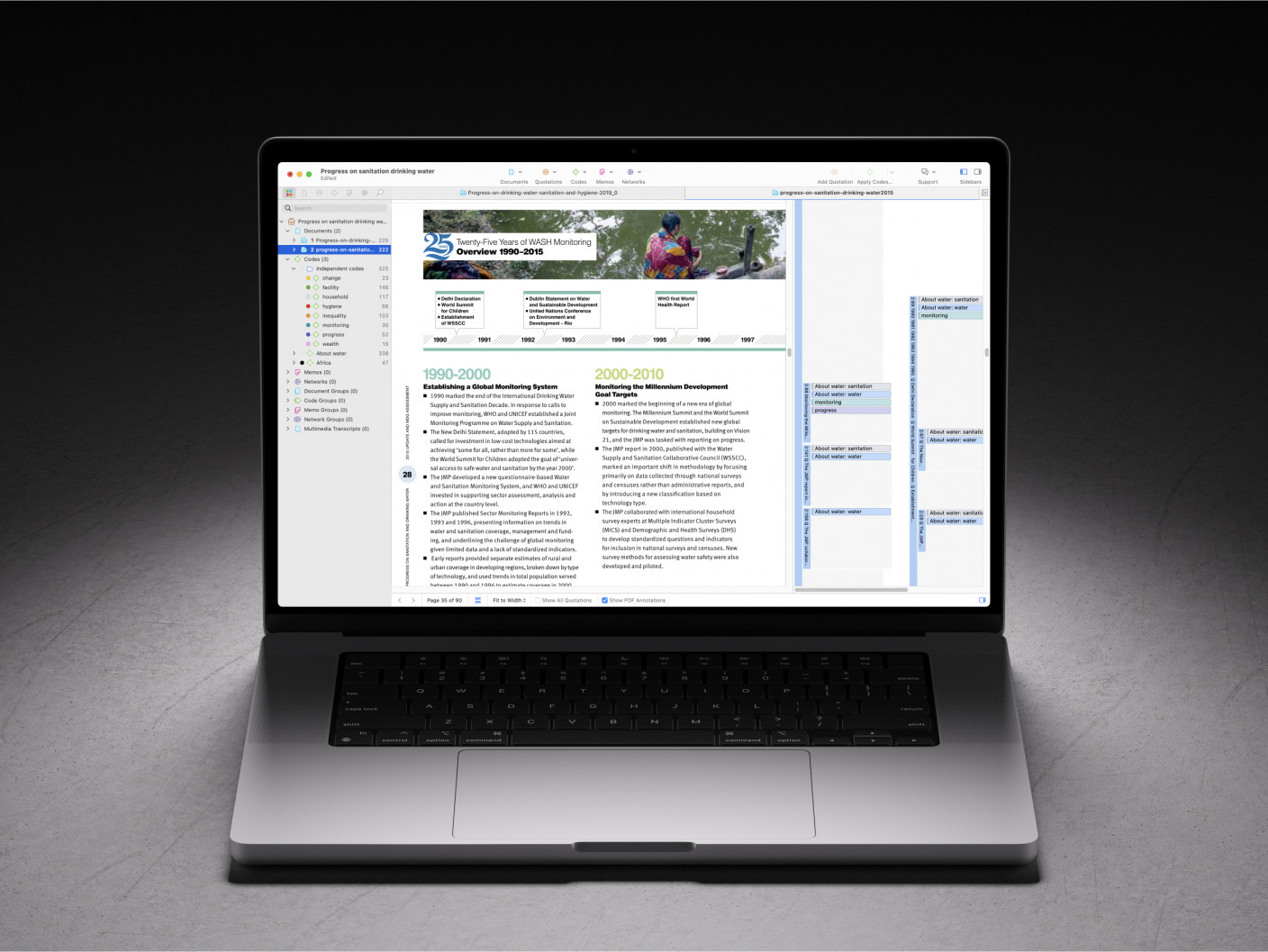- What is Mixed Methods Research?
- Advantages of Mixed Methods Research
- Challenges in Mixed Methods Research
- Common Mistakes in Mixed Methods Research
- Mixed Methods Research Paradigms
- Validity & Reliability in Mixed Methods Research
- Ethical Considerations in Mixed Methods Research
- Mixed Methods vs. Multiple Methods Research
- Mixed Methods Research Designs
- How to Choose the Right Mixed Methods Design
- Convergent Parallel Design
- Explanatory Sequential Design
- Exploratory Sequential Design
- Embedded Mixed Methods Research Design
- Transformative Mixed Methods Design
- Multiphase Mixed Methods Research Design
- How to Conduct Mixed Methods Research
- Sampling Strategies in Mixed Methods Research
- Data Collection in Mixed Methods Research
- Triangulation in Mixed Methods Research
- Data Analysis in Mixed Methods Research
- How to Integrate Quantitative & Qualitative Data?
- How to Interpret Mixed Methods Research Findings?
- Software Tools for Mixed Methods Data Analysis
- How to Write a Mixed Methods Research Proposal
- How to Write a Mixed Methods Research Paper?
- Reporting Results in Mixed Methods Research
- Mixed Methods Research Examples
- How to cite "The Guide to Mixed Methods Research"
How to Conduct Mixed Methods Research
Mixed methods research requires careful planning to integrate statistical analysis with the rich context provided by qualitative data collection methods like interviews and observations. In this article, we’ll walk through the key steps for conducting a mixed methods research study, from framing your research questions to analyzing and interpreting integrated data.

Introduction
Mixed methods research goes beyond simply combining quantitative and qualitative approaches; it requires a thoughtful, systematic process to ensure both methodologies complement each other effectively. This approach enables researchers to explore complex phenomena by capturing the depth of qualitative data alongside the generalizability of quantitative findings. Qualitative data collection, through methods such as interviews, focus groups, and observations, provides rich, detailed insights into participants' experiences and perspectives, while quantitative data reveals measurable trends and statistical relationships.
To achieve meaningful results, researchers carefully plan each phase of the study, from defining the research problem to outlining data collection and analysis strategies. This planning starts with critical preliminary questions, such as whether the research problem suits a mixed methods approach and whether combining methods adds value beyond using a single approach. After making these foundational decisions, researchers follow a structured process to design and conduct the study. The following steps draw from John W. Creswell's 2023 online workshop, offering a comprehensive framework that guides researchers through each stage, ensuring methodological rigor, coherence, and clarity throughout the research journey.
Preliminary questions and considerations
When planning a mixed methods research study, a researcher must consider and ask a set of preliminary questions to make sure that mixed methods is the best way to reach their research goals. Here are some questions you can consider:
Is the problem suited for mixed methods?
The first step in determining whether to adopt a mixed methods approach is assessing the nature of your research problem. Mixed methods research is most fitting when the research problem requires insights that neither qualitative nor quantitative methods alone can fully address. Ask yourself: Does my research question involve exploring complex phenomena where both numerical trends and participant perspectives are needed? For example, if you're studying patient satisfaction with healthcare services, you might use surveys to quantify satisfaction levels and interviews to understand the reasons behind those numbers.
Will combining methods add value beyond a single method?
Using both qualitative and quantitative methods can provide a more comprehensive understanding of a problem, but this should only be done if the combination enhances the research outcome. Reflect on the potential added value of integration: Will qualitative data help explain unexpected patterns in the quantitative data? Will quantitative results validate or complement qualitative insights? If integrating the two methods clarifies contradictions, enriches findings, or supports broader generalizability, mixed methods are suitable.
Do you have the necessary skills?
Conducting mixed methods research requires proficiency in both qualitative and quantitative approaches. Evaluate your skillset honestly:
Are you familiar with qualitative techniques such as thematic analysis, coding, or grounded theory?
Do you have experience with quantitative methods like statistical analysis or designing structured surveys? If you're less confident in one area, consider collaborating with others with complementary expertise or investing in training to strengthen your capabilities.
Are you informed about mixed methods research?
Mixed methods research requires a strong understanding of its theoretical foundations and practical applications. Ask yourself:
- Have you reviewed key texts or articles on mixed methods research?
- Are you familiar with designs such as convergent, explanatory sequential, or exploratory sequential approaches? Leading resources, such as Creswell and Plano Clark's work on mixed methods, provide frameworks to guide your design and execution..
Step-by-step overview for conducting mixed methods research
Creswell recommends that, once the following steps are completed, they should be reorganized in the following order to create a clear and logical structure for your mixed methods research project.
1. Draft a preliminary title
The preliminary title serves as a benchmark or, as Creswell describes it, "a signpost for the study." While the title will likely evolve as the study develops, creating a concise and focused working title is a valuable starting point. Ensure the title clearly conveys the study's topic, participants, and site while explicitly including the term "mixed methods" to inform readers that qualitative and quantitative approaches will be applied. Keep the language neutral to reflect the balanced nature of mixed methods research, which lies at the intersection of qualitative and quantitative methodologies. Avoid terminology that leans heavily toward one method, such as qualitative terms like "explore," "meaning," or "discover," or quantitative terms such as "relationship," "predict," "correlate," or "determinants." Neutral phrasing ensures the title does not inadvertently suggest a preference for one approach, maintaining the integrity of the mixed methods design.
2. Establish the need for the study
Articulating the research problem highlights why the study is necessary and sets the foundation for a mixed methods research design. The problem may stem from gaps in the literature where existing studies fail to provide comprehensive insights or lack depth. It may also arise from conflicting results that require qualitative data for context and quantitative findings for validation. Research problems can also be practice-driven, addressing the need to improve professional practices or inform policy development. In some cases, the study may aim to generate or refine theoretical frameworks by integrating qualitative and quantitative research approaches. Additionally, a mixed methods approach is valuable for amplifying underrepresented voices, providing rich narratives alongside broader generalizations to ensure inclusive and actionable findings.
3. State general intent or the primary research question
Define the central question your study seeks to answer. Consider: What do you aim to learn by the end of the study? Phrase the question to reflect a balance between qualitative and quantitative research. A quantitative question might ask, “What is the impact of peer mentoring on academic performance?” A qualitative question might explore, “How do students describe their experiences with peer mentoring?” For a mixed methods study, integrate both: “How do students’ experiences with peer mentoring explain trends in academic performance?” The phrasing of your question sets the tone for the study’s design and reveals the researcher’s methodological strengths, helping align the approach with the research goals.
4. List types of data to be collected and procedures for analysis
Organize data collection and analysis methods into quantitative data (close-ended) and qualitative data (open-ended). Quantitative data includes instrument-based data such as surveys, scales, observation checklists, and numerical records. It also covers descriptive statistics (e.g., means, frequencies), inferential statistics (e.g., hypothesis testing, regression), and comparative analysis (e.g., ANOVA, correlation). Qualitative data includes interviews, focus groups, observational field notes, documents, and audiovisual materials. It also involves coding, developing themes from codes, and connecting themes to form an interpretive framework.
5. Identify reasons using mixed methods research
Mixed methods research addresses the limitations of single-method approaches by integrating qualitative and quantitative data. General reasons for adopting mixed methods include the insufficiency of either approach alone, its growing prominence in research, and its adaptability to various fields. Specific reasons include gathering multiple perspectives for a more holistic understanding, contextualizing data within specific settings, or expanding on existing findings. For example, in global health, mixed methods might explore program effectiveness through quantitative findings while using qualitative data to understand participant experiences. Additionally, it can enhance program evaluations or refine experimental results for deeper insights.
6. Stating your worldview and theory
Your worldview reflects the philosophical lens through which you approach your research, shaped by your values, field experiences, and professional networks. This worldview informs your research paradigm, whether it is postpositivist (objective, focused on testing theories), constructivist (subjective, emphasizing participant perspectives), transformative (advocacy-focused, addressing power imbalances), or pragmatist (problem-solving, integrating diverse methods).
Identify the theory guiding your study: Will it incorporate an advocacy lens, such as feminist, racial, ethnic, disability, or sexual orientation theories, or a behavioral framework like leadership, behavior change, or adoption and diffusion theories? Consider which theory aligns with your research goals and has been applied effectively in your field. Reflect on how this theory will shape your research design, influence your qualitative and quantitative data collection, and frame the interpretation of your findings.
7. Write a definition for mixed methods research
When defining mixed methods research, it is essential to use a recent and widely accepted definition from credible sources. Mixed methods research typically involves collecting, analyzing, and integrating quantitative and qualitative data to address a research problem more comprehensively than either method alone. The definition should highlight how the integration of these approaches occurs within a specific mixed methods design (e.g., convergent, explanatory sequential, exploratory sequential) and often incorporates a theoretical or philosophical framework, such as pragmatism, to guide the research process.
Refer to foundational texts, such as Creswell and Plano Clark's latest editions or key articles from journals like the Journal of Mixed Methods Research, to ensure your definition aligns with current practices and trends.
8. Identify your mixed methods design and draw a diagram of it:
There are two types of mixed methods designs: basic and advanced. A researcher must first determine the basic design, as it forms the foundation of every mixed methods study. What is your basic design? Will your study merge results (convergent parallel design) or connect them sequentially, with one set of findings leading to the next (connection)? If connecting, you may choose an explanatory sequential design (quantitative followed by qualitative) or an exploratory sequential design (qualitative followed by quantitative), depending on the sequence of your research. As for the diagram, it has to be simple.
Once you determine your basic design, you can enhance it by incorporating an advanced design component. This might include an experiment, a guiding theory such as social justice theory, or a specific theoretical orientation to frame the study. Another advanced option is a program evaluation component, where you start with a needs assessment, develop and test an instrument, and conduct a program evaluation with a defined objective.
9. Craft a mixed methods purpose statement
The purpose statement consists of key elements, including the study’s intent, the selected mixed methods design, the specific quantitative and qualitative objectives, and the rationale for integrating the two types of data.
10. Write your quantitative, qualitative, and mixed methods research questions
There are three primary types of research questions: quantitative, qualitative, and mixed methods. Crafting a well-formulated question depends on the research approach. For qualitative research, questions typically begin with "what" or "how," focus on a single phenomenon, use non-directional language, and remain general to allow participants' perspectives to emerge. Quantitative research questions, on the other hand, clearly state variables—such as independent, dependent, mediating, or covariate variables—develop theories, and arrange variables from independent to dependent.
It is essential to align the research question with the study design. For example:
- In a convergent parallel design: "To what extent do the results of quantitative and qualitative data converge?"
- In an explanatory sequential design: "In what ways does qualitative data help explain the quantitative findings?"
- In an exploratory sequential design: "In what ways can quantitative findings generalize insights derived from qualitative results?"
Creswell advises that, after completing these steps, you should reorganize them in the following order:
- Title
- Problem statement
- Explicitly state the worldview or theoretical framework
- Purpose statement
- General intent
- Research questions
- Rationale for using mixed methods
- Definition of mixed methods research
- Types of data to be collected and analyzed
- Conclude with a preliminary design diagram
This sequence provides a solid foundation for a mixed-methods research project.
Conclusion
Following Creswell’s recommended sequence helps create a well-structured mixed methods research project that flows logically from the research problem to the design framework. This organization strengthens the study’s clarity and coherence, making it easier to articulate the purpose, rationale, and methodological choices. Each section builds upon the previous one, providing a comprehensive foundation for your research. With this framework in place, the next steps involve refining each component to ensure alignment between your research questions and methods, developing detailed plans for data collection and analysis, and preparing for the practical implementation of your mixed methods study.
References
- Creswell, J. W. (2023). How to conduct effective qualitative interviews [Video]. YouTube. https://www.youtube.com/watch?v=Is1ncHHLjz0


